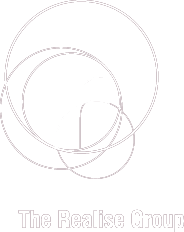Buying Beauty Products in Australia: Customer Insights Case Study
$6.5 billion. It’s fair to say that beauty is big business in Australia. L’Oreal Australia Managing Director, Rodrigo Pizarro, was quoted in the AFR late last year, “One that’s obvious is data – everybody is looking for data so we have the right brands in the right channel in the right retailer in the right mix.” *
You want to know the data behind the dollars? Field Agent spoke to 500 Australian women who buy makeup to see what’s really going on behind the mirror. We talk all things beauty: makeup, brands, retailers, claims, spend, channels and more. The research covered topics such as buying preferences, spending, brand loyalty, ethics and other data analytics.
Understanding how, when and why your customers purchase your product or service is a critical factor in making smart and informed business decisions. Gathering the right data allows you to identify patterns and gain a thorough understanding of your customer's buying behaviour.
30% of respondents nominated price as the most important buying factor, followed by colour (23%), quality (19%) and brand name (15%). Least important was label claims (8%).
The fundamental question of why women buy makeup in the first place came down to feeling good about themselves. Over half of the respondents rated this as the most important factor. Other reasons given were to look professional, to cover defects, and at only 4%...to simply have fun.
Daily makeup use was most prevalent in women 65 and older (50%) while the lowest percentage of was reported by women aged 18 to 24 (19%).
Where do women learn about makeup trends? Perhaps unsurprisingly social media was nominated by more than half of the respondents. However in-store was not far behind at 46% while good old word-of-mouth still accounted for 42%. Other less-significant channels included YouTube, beauty websites and print magazines. Beauty blogs were perhaps surprisingly rated at only 14%. Least significant was online magazines at 11%.
How well do women know their makeup needs? Just over half said they were somewhat confident, while 25% were very confident. On the negative side only 8% said they were somewhat not confident while just 1% of women were not confident at all.
42% of women bought makeup when it was on sale, while slightly less paid the full price.
The average monthly spend on makeup was $43 with the top spend by brand being MAC, followed by L'Oréal, Estee Lauder, Maybelline and Revlon. Lowest spend belonged to Rimmel.
By far the most popular location for purchases was chemists, nominated by 70% of respondents. Department stores were well behind at 29%, specialty shops at 27% and supermarkets 26%. Proving that online retailing doesn't completely dominate in every sector, online-only stores came in at only 10%.
Who was the leading retailer? Priceline topped the chart with 32% of women nominating them as their makeup retailer of choice due to their range, price and convenience. The next favourite retailers were Chemist Warehouse, Mecca, Myer and Sephora. The survey also collected a wide range of personal feedback from shoppers with comments such as "I like the personal attention given by the in-house makeup experts".
The majority of respondents said that in-store displays were only moderately effective at getting attention, while 29% said they were very effective and 17% rated them as extremely effective.
Do testers matter? It seems so. 61% rated this as very important while just 3% said it was somewhat important.
Having staff available to help is an important factor, with 64% of respondents requesting help either always, usually or sometimes, and only 38% rarely or never requesting help.
While online-only stores accounted for a relatively small percentage of channels, makeup was still the top beauty products for online purchases at 79%. Almost half of the respondents tried in-store but bought online.
The main reason given for not buying online was the lack of a colour test. Other reasons given were not being able to feel the products, expensive shipping and long delivery times.
MAC came out on top as the most favourite brand, with foundation as the top category for brand loyalty.
Do claims on labels matter? It would seem so, with claims such as "dermatologist tested" and "long wearing, long lasting" being the most important.
The report also looked at issues such as ingredient safety and ethical claims. For example around half of the respondents cited "cruelty free/no animal testing" as important.
The range of data collected using crowdsourced insights is extensive and can be extremely useful to your business for consumer insights, product planning and developing marketing strategies.
With Realise Group and Field Agent, we can help you collect vital shopper and consumer insights. We offer your business the Retail Audit service which is a great tool to improve the business performance.
Contact us for more information and more services.


















